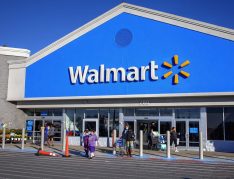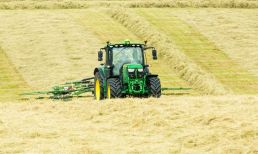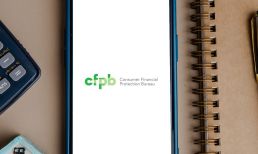Like so many verticals that have adapted to survive the COVID-19 era, the restaurant industry is seeing the acceleration of trends that were already in place, Dave Boennighausen, CEO of fast-casual chain Noodles & Company told Karen Webster in a recent conversation. He said Noodles’ more than 450 eateries are making operational adjustments that he sees as long-term digital shifts that have surged in the past six months.
Boennighausen said that while 2020 “was challenging [and] terrifying at times, it probably was also an inflection point for our brand.” He said the pandemic has given his company additional brand awareness, market share and growth opportunities that probably wouldn’t have happened otherwise.
“The phrase ‘necessity is the mother of invention’ has never been more on display than it has in the last six months,” he noted.
Smaller Stores, Additional Drive-Thrus And A Better In-House App
As 60 percent of Noodles’ business was already off-premises dining even before COVID-19 struck, Boennighausen said the emergence of curbside pickup has been the biggest enhancement that his chain has implemented.
It’s also one that he expects to refine over the coming months to reduce friction and adjust for cold weather. That’s seen partly in the redesign of Noodles locations to be smaller and include drive-thru windows. But the company is also doubling down on efforts to get customers to order through Noodles’ app versus restaurant aggregators.
Advertisement: Scroll to Continue
“Obviously, there’s a strong preference to have [customers] go to our own native channels,” Boennighausen said. “Right now, only about 12 to 15 percent of our delivery is coming through our own native channels. We would love to see that percentage double in the upcoming year.”
Although Noodles’ menu is the same on any platform, he said there’s a 10 percent price premium if customers order through a third-party site.
“Certainly, that comes with some margin pressures,” Boennighausen said. “But overall, we’re seeing [aggregators] funnel in new guests who are discovering the brand” – which greatly outweighs the extra cost.
Surviving The Latest COVID Wave
At a time when COVID case counts are spiking again in almost every state, Boennighausen is surprisingly calm from a business standpoint.
“I think our brand is well-positioned for off-premise,” he said. “We will do fine.”
Noodles is fortunate that its menu – noodle and pasta dishes, soups and salads – is well-suited for takeout. The company had also already been investing in tech for years, and just revamped its entire digital platform last November.
As a result, Noodles has not only enjoyed access to better data, but that data is also getting cheaper, noted Boennighausen. He said the Colorado-based company’s cost-per-acquisition charges, open rates for email and content engagement expenses are “all moving in the right direction.”
Noodles is also fortunate to be on the right side of the work-from-home trend that has hurt breakfast sales and dramatically reduced business lunches. By contrast, he said the company’s dinner sales and average ticket sizes are both up, helped in part by online ordering and customers ordering for larger groups.
Technology is also helping. “A computer’s going to ask you 100 percent of the time, ‘Would you like to add X or Y?’” Boennighausen said, noting that this method of ordering eliminates the psychological barrier that might make guests uncomfortable adding a Rice Krispie treat for dessert.
As far as where the quick-serve restaurant business will be a year from now, Boennighausen said he’s optimistic, but thinks a “significant survivor bias” exists. He said that will favor companies that are well-positioned and well-capitalized.
“As much as any industry in this country, [restaurants are] incredibly innovative,” he said. “They’re extremely resilient.”




